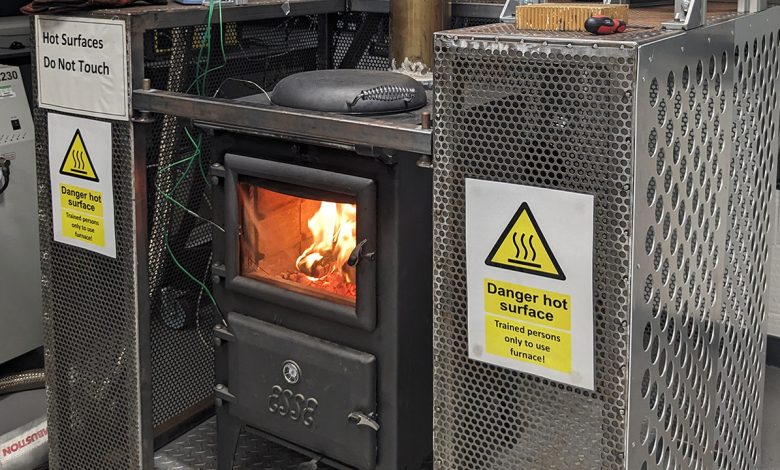New Study: British Scientists Gauge Air Pollution Emitted by Home Wood Burners

Researchers at The University of Manchester have embarked on a six-week study to measure the levels of airborne pollutants emitted by domestic wood burning stoves. This innovative research is being conducted in a dedicated laboratory-based testing facility, with atmospheric chemists from the National Centre for Atmospheric Science, University of Manchester, and University of York collaborating to quantify the gases and aerosols produced by these stoves in people’s homes.
Wood burners have become increasingly popular in recent years, particularly in response to harsh cold weather and the rising costs of gas and electricity. However, in the UK, wood burning in homes is the primary direct source of small particulate matter (known as PM2.5), which is less than 2.5 micrometres in diameter. These particles have carcinogenic potential and contribute significantly to air pollution in urban areas.
Exposure to PM2.5 particles can have severe health impacts, especially for vulnerable groups such as the elderly and those with respiratory illnesses. To better understand the emissions from wood burners, scientists are utilizing a cutting-edge test facility within a Manchester-based laboratory. By replicating various conditions and real-life scenarios, researchers can accurately capture and study the emissions.
Dr Marvin Shaw, a research scientist at the National Centre for Atmospheric Science and the University of York, highlighted the importance of this project, stating that previous studies have shown the significant impact of operational conditions and unconventional fuels on pollution from household wood burners. This collaborative research aims to shed light on how the operation of these stoves affects the release of gas and particulate pollutants.
The team is collecting high-resolution data to gain a detailed insight into real-time emissions during wood burner operation in homes. Dr James Allan, a research scientist at the National Centre for Atmospheric Science and the University of Manchester, emphasized that current emission predictions assume correct operation and use of appropriate fuels in wood burners. However, it is suspected that many people do not use these stoves correctly, which can lead to overstacking of fuel or burning of unseasoned wood. The laboratory experiments will investigate the effects of gas emissions that condense in the air and form particulate matter after being emitted.
This research project, known as CondensabLe AeRosol from non Ideal Stove Emissions (CLARISE), brings together expertise in biomass burning experiments, emissions monitoring, atmospheric complexity analysis, and regional modeling. Its goal is to provide a comprehensive understanding of the impact of wood burners on air pollution and ultimately contribute to the development of effective strategies to mitigate their harmful effects.




